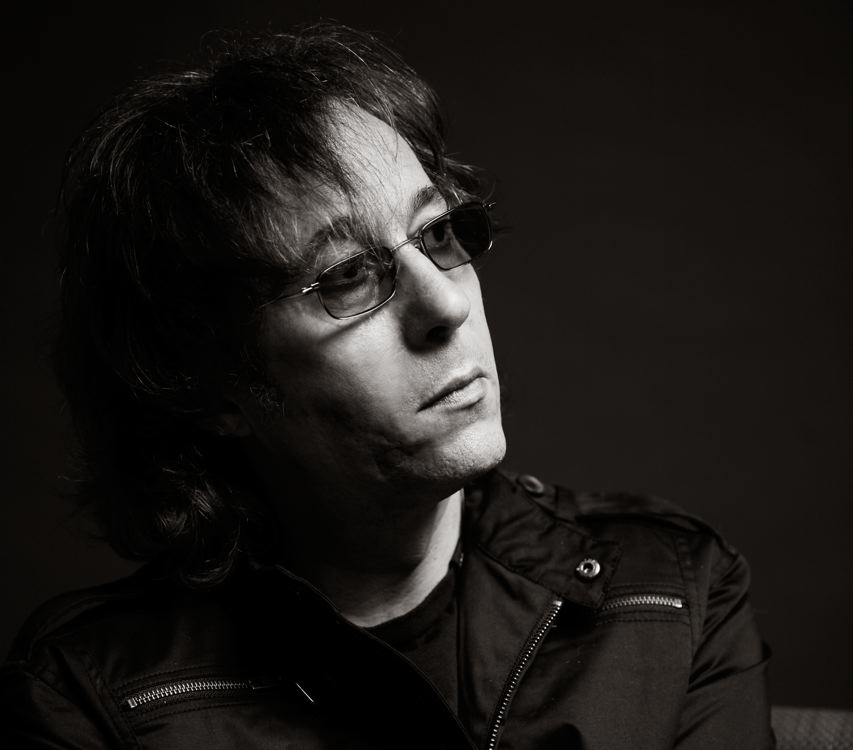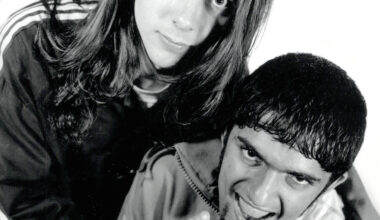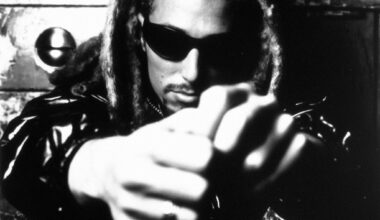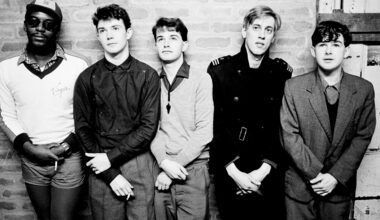Synth master Richard Barbieri remembers the heady days of 1980 and gives us the full skinny on Japan’s first single for Virgin Records

At the time Virgin signed us, we didn’t have any hits. What convinced them to take us on was this growing interest in the band. They came to see us play live and realised we’d been playing all these London shows that were sold out in advance. We had a residency at The Music Machine in Camden – I think it’s called Koko now – and we used to sell that out every week. So Virgin took a gamble with us, and ‘Gentlemen Take Polaroids’ was the first recording we did with them.
I think Japan had three stages. You can group them: the first two albums are of a type, and then ‘Quiet Life’ was a big musical change, and then there was another massive change for ‘Tin Drum’, which was a completely different sort of animal altogether. The ‘Gentlemen Take Polaroids’ album is an extension of ‘Quiet Life’ really. With ‘Quiet Life’, we’d found a way of doing things and a producer we liked working with, so ‘Polaroids’ was about perfecting a new style we’d developed.
The hardest thing to explain is how we used to compose and arrange our music. Nowadays, you can move tracks around on a computer within seconds and easily test different things out. Back then, you couldn’t record everything you did, so to try new ideas you’d have to play the whole thing again, but that’s how we did it. Just in a studio, a couple of keyboards each, building the track up like that.
Although David Sylvian is credited as the writer on all the tracks, by that time we were working on material together as a band and arranging them in rehearsal rooms. David would come in and he would usually start playing either an acoustic guitar or, as in this case, a keyboard. He had this basic line which is on the album, playing single notes, going through the verse, and we would all start playing along. I still have tapes of us rehearsing and writing this song.
The sections gradually built up from that and then we’d start working on the arrangements. Of course, David would have a vocal in mind already: it’s always good to have the security of the song behind whatever you’re doing. It was an authentic, organic process, but it worked because we had a good understanding of each other. It was a process we’d developed while recording ‘Quiet Life’, so by this time we were quite comfortable with it.
The studio we used belonged to Virgin and it was really well-equipped. I ended up playing a few things that weren’t part of my normal set-up on the ‘Gentlemen Take Polaroids’ track itself, like a Polymoog and a Micromoog, and I think David played an ARP Omni and a Roland Jupiter 4. They’re things that didn’t feature before, and didn’t feature in the future either, they were just around in the studio. Everybody’s very precious about vintage gear now, but in those days you didn’t think the kit was anything special. When I look at the old stuff I was using then – and I’ve still got it all – I’m so full of awe, I love it, but at the time, I didn’t really feel that way about it. I just thought, “This is what I need in order to get the job done”.
Looking back, what I find hard to imagine is how I managed to go on stage with some of these synths! Some of them didn’t have memories, so you couldn’t store your sounds, you had to program everything as you went along. Sometimes you had to program for the next track while you were still playing the previous one. I would never even attempt that now!
We had a piano on the track too. We used to sometimes treat an acoustic piano by opening it up and putting little weights on the strings to get different tones and mutes and generally make each note a little more interesting harmonically. Studios would be horrified to find out people did this. It was nice to hit on those low notes in unison with the bass drum and it gave a nice emphasis to what Steve Jansen was doing with the drums at that point. Mick Karn played a lot of other things besides his bass on the track too, like saxophone and oboe, and Rob Dean played a beautiful EBowed guitar throughout, which helped give it a really rich sound palette.
‘Gentlemen Take Polaroids’ doesn’t have a normal verse-chorus-verse-chorus arrangement. It’s about seven minutes long and it has this really nice outro segment after the last chorus. Most tracks would fade out or start to end there, but this goes into a whole new piece at the end. Everything drops down dynamically and David starts singing layers of baritone voices, and all these abstract electronics start coming in. And it builds from there and becomes quite eerie. That’s the favourite part for me, when that outro starts.
There’s this application I liked to do back then, which I used in the outro here: I would have my Roland System 700 on a sample and hold setting. It makes random pitches controlled by an LFO that aren’t in time with the track, just running randomly, but the notes often fall in quite interesting places. It’s never exactly wrong, because there’s always seemingly a beat it can attach to; the tuning is off as well, so sometimes it’s just a tiny bit out and it sounds lovely. It’s like an accident. You let it run and think, “I hope it works!”. But you end up with little electronic tones in exactly the right places that you could never replicate again.
‘Gentlemen Take Polaroids’ was the last album we recorded with John Punter as our producer. We started working with John on ‘Quiet Life’, which was for me the most enjoyable album we ever made, and John really brought his personality to the ‘Gentlemen Take Polaroids’ single. Whenever I listen to it now, I’m always surprised at how processed the whole thing is: there’s a flanger, or a phaser, or a pitch shift on everything – the drums, the bass, the vocals, everything.
At that time, everybody in Japan had an innate respect for each other whereby we gave each other a lot of space and time to try things out. If I walked into a rehearsal room today and somebody was playing and they wanted me to join in, I’d be conscious about coming up with something that would be safe and would fit in and would work, because I wouldn’t want to embarrass myself. But being fearless comes with being young – and we were only about 22 when we recorded ‘Gentlemen Take Polaroids’. If you don’t have any fear and you don’t know what’s involved, then you don’t really worry about it, do you?
When Orson Welles first started making films, he didn’t know the rules, so he could break them. He could come up with something original because he didn’t know what he was supposed to do. He just did what he felt was right. And we had that same attitude. When you’re not having to follow any particular guidelines, and you’re working with people you trust, people who give you the space you need, you come up with stuff. You don’t know if it’s what you should be doing or not, but you do it anyway.
In the end, the ‘Gentlemen Take Polaroids’ single only charted at Number 60 and Virgin weren’t too happy about that. But a year later, our old label, Hansa, re-released all our earlier singles and we were in the charts every week. By the time ‘Tin Drum’ came along, the New Romantic thing had started, and ‘Quiet Life’ and ‘Polaroids’ seemed to fit really well with that scene. It’s funny really, because we never felt a part of it, but at that time Japan and Soft Cell were the most popular chart acts of the year.





